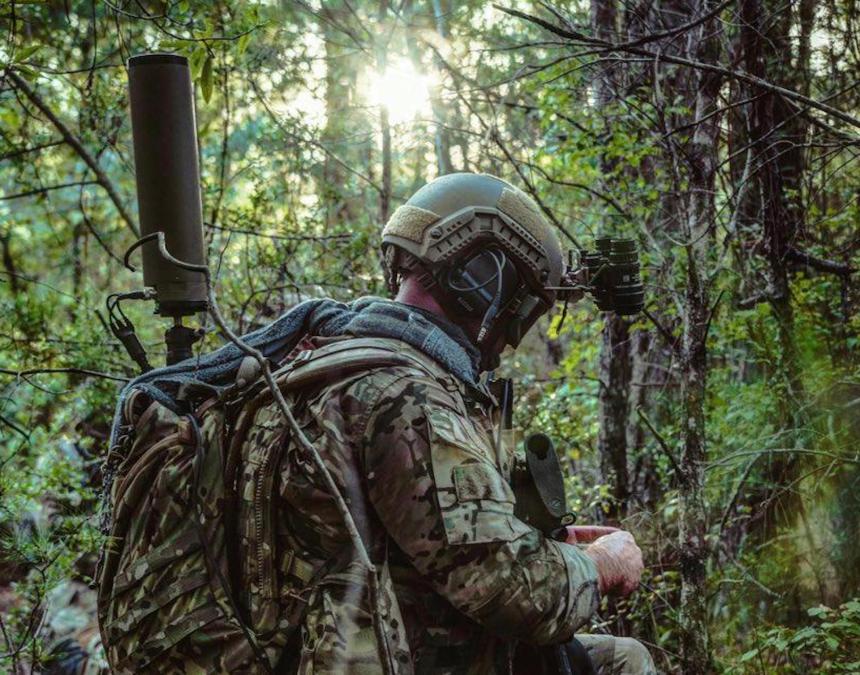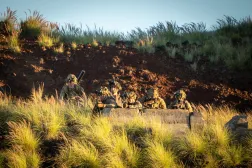Originally published Army seeks more flexible funding on electronic warfare capabilities, programs on by https://defensescoop.com/2024/10/17/army-seeks-flexible-funding-electronic-warfare-capabilities-programs/ at DefenseScoop
Close
In order to be more responsive to emerging and dynamic battlefield threats, the Army is asking Congress for flexible funding on electronic warfare, along with drones and counter-drone systems.
Listen to this article
0:00
Learn more.
This feature uses an automated voice, which may result in occasional errors in pronunciation, tone, or sentiment.

The Army wants flexible funding from Congress on electronic warfare to more easily move money around programs to focus on priority areas.
Officials are finding from Ukraine’s conflict with Russia that the technology landscape can change in days, not months. As a result, the Army is pitching the need for fiscal nimbleness to be able to make changes to systems on the battlefield or procurement efforts to get soldiers the capabilities they require.
“Recognizing that we’ve made the shift from primarily what used to be a counter-IED focus to now one where we’re dealing with near-peer threats and a very, very contested battlespace. Flexible funding is one of the three areas we’ve talked about. Recognizing that even as we’ve seen in Ukraine, the EW changes in software that both sides are employing, often are done in a matter of days or hours,” Gabe Camarillo, undersecretary of the Army, told reporters on the sidelines of the annual AUSA conference. “We are looking at making sure that we can rapidly iterate our EW capabilities in a similar fashion. I think having the program and funding flexibility to do it will help us.”
At the end of the Cold War, the Army divested much of its electronic warfare inventory. During counterinsurgency fights of the last 20 years, soldiers used blunt jamming tools to thwart improvised explosive devices, which, in turn, inadvertently jammed friendly systems. Now, the service is trying to develop more sophisticated systems to directly compete with advanced adversaries, their tactics and capabilities.
“A direct result of what we’re seeing in Ukraine is causing us to — our budget [request] that will come up next spring, you’ll see a significant increase in investment in unmanned aerial systems, counter-UAS and electronic warfare capabilities as well,” Army Secretary Christine Wormuth said at an event in September. “There’s a very tight cycle between the Ukrainians and the Russians in terms of developing a capability and then developing a counter to that capability. But one of the things the Russians have really been cycling quickly on is their EW capabilities, and that’s made it harder for the Ukrainians.”
As part of the flexible funding request — which also includes uncrewed systems and counter-unmanned systems technologies — the Army will be plussing up its electronic warfare budget, though top officials have been vague on exactly where those investments will be made.
According to the Army’s program office responsible for electronic warfare, the service embarked on a comprehensive review of its EW enterprise that spanned the scope of electronic attack, electronic protect and electronic support capabilities, also examining their relationship with signals intelligence as a means of ensuring it’s postured to address the current and emerging threats associated with large-scale combat operations.
“We considered major capability gaps, investments opportunities, trades, architecture considerations, and policy change requirements. Prioritization is on increasing EW capabilities at all echelons and formations from the company level all the way up to theater,” the program office said in a statement.
Some specific efforts mentioned by name include:
- The Electronic Planning and Management Tool, a command-and-control planning capability that allows service members to visualize potential effects within the invisible spectrum and chart courses of action to prevent their forces and systems from being jammed during operations. The Army is embarking on the EWPMT “Next” effort, which involves shifting to the Tactical Assault Kit framework, where applications for situational awareness data and geospatial visualizations can be created for better joint and coalition integration.
- The Spectrum Situational Awareness System, a new start in fiscal 2025 envisioned to be a commercial off-the-shelf solution that will provide sensing and visualization of what units look like in the spectrum and allow commanders to be able to sense and report in real-time their command post signature, sources of electromagnetic interference — either from coalition partners or the enemy — and what threat emissions look like.
- The Modular Electromagnetic Spectrum System, which is related to command post survivability and could employ techniques to confuse and deceive adversaries born out of a prior science-and-technology effort called Modular Electromagnetic Spectrum Deception Suite (MEDS). That will be a new start in fiscal 2026.
Other capabilities in the Army’s current pipeline not mentioned include:
Army officials have also noted they want to move away from major programs that take years to develop through lengthy requirements, in favor of more commercial-based systems that have demonstrated maturity.
The program office added that the Army is considering several ways to be more agile in the electronic warfare space to include the potential consolidation of funding lines to allow for increased flexibility while maintaining acquisition discipline and oversight, and establishing contracting mechanisms to acquire and integrate software solutions faster.
As it currently exists, programs are set up as specific line items with specific pots of money. The Army can’t take money from one electronic warfare program line item and move it to another to adjust to real-world needs, if, for example, a certain technology has matured that could be surged to forces on the battlefield.
Flexible funding could allow the service to move those pots of money to where forces need them, or if a new technology comes along that is ready for primetime.
“You talk to a lot of these companies out there, with tech companies … they will tell you that six months from now, things are going to be completely different. We want to buy a modular, open system architecture systems that we can put any different kind of sensor on. I think that’s going to help with the money problem as well, and that we can continue to adapt,” Gen. Randy George, chief of staff of the Army, told reporters at the AUSA conference.
“Agile funding enables us to buy technology in tranches that work together in open architectures, with interchangeable parts, and software-defined components that can be changed quickly to meet our needs. This is how we move from named systems to capabilities. We have to be willing to make smaller bets within budget cycles and we have to pick winners with more frequency. We cannot buy programs for 10 years at a time anymore. Technology changes too fast,” George said during remarks at the conference.
Officials noted that Congress has been receptive to this need but also wary.
“In my experience, appropriators in particular, are leery of what they see as slush funds. But I think, given the dangerous environment we’re in and the recognition by everyone that technology is evolving as rapidly as it is, there’s more openness to this,” Wormuth told reporters. “We’ve been talking to both members, but also clerks and PSMSs on the Appropriations Committee about how we can perhaps consolidate budget line items into fewer pools and have the ability, as a result, to be able to move money around … We’re not trying to eat the whole elephant all at once. We’re trying to start with more of a pilot approach, see if that works, and if members and their staffs feel like they can have the oversight and transparency that they need to have to do their jobs, we may, in the future, be able to expand it.”
More Scoops

Army expanding ‘transforming-in-contact’ concept to divisions, armored and Stryker brigades
Chief of Staff Gen. Randy George unveiled transforming-in-contact 2.0.

Here’s what pre-prototypes and deployments have taught the Army about business jet ISR program

Second transforming-in-contact unit putting new tactics to the test in the Pacific for the Army
Latest Podcasts
Originally published DefenseScoop

